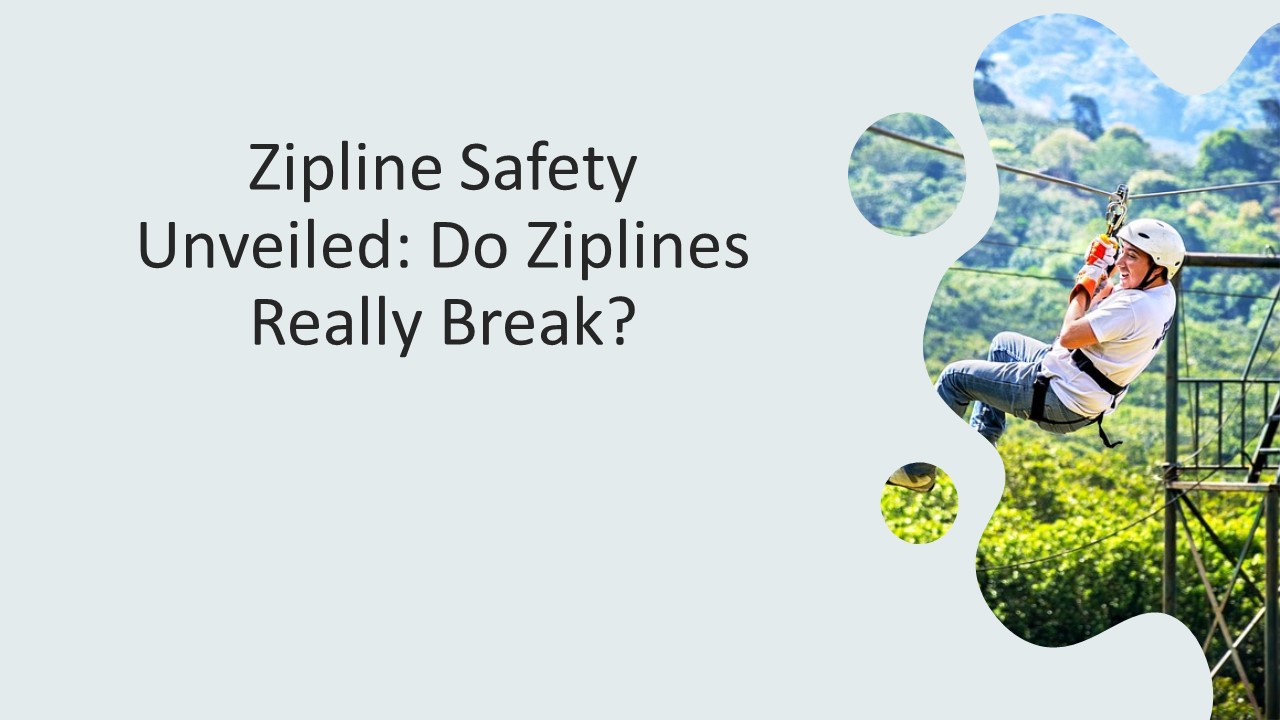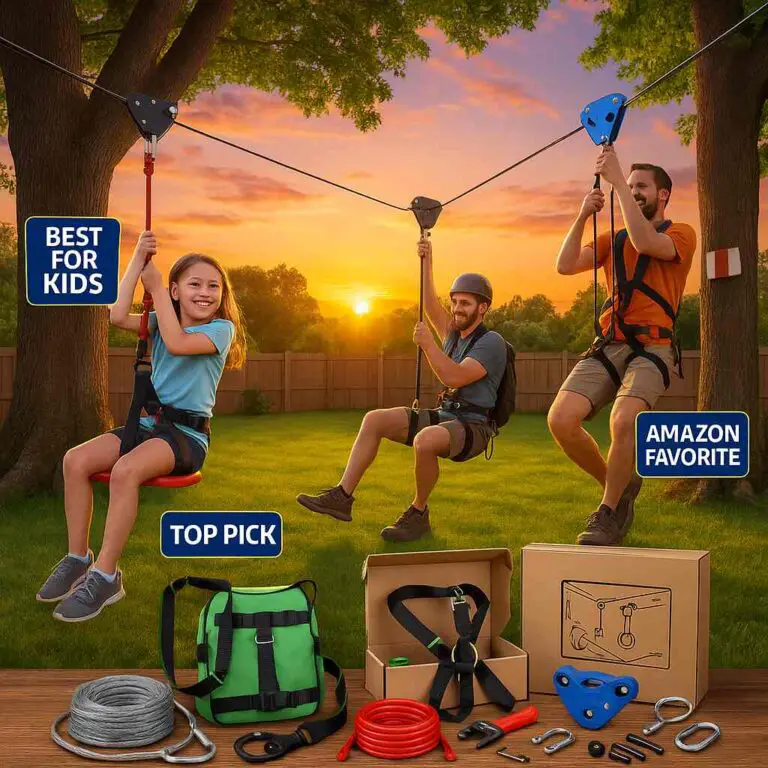In recent years, ziplining has become a popular adventure activity for thrill-seekers around the world. From towering rainforests to urban landscapes, ziplines offer a unique way to explore and experience the world from a different perspective. However, with any adventure activity, safety is always a top concern. One of the most common questions that people have when considering ziplining is, “Do ziplines break?”
While zipline breakages are rare, they can and do occur. Proper maintenance, inspection, and operation procedures are crucial to minimizing the risk of zipline breakage, and participants should follow all safety procedures and guidelines to maintain their own safety. In the rare event of a zipline breakage, most operators have emergency procedures in place to safely evacuate riders and provide medical attention as necessary.
In this article, I’ll explore the construction of ziplines, common reasons for zipline breakage, how often ziplines break, and what happens when a zipline does break. I’ll also discuss the importance of safety in ziplining and why it should be the top priority for both operators and participants.
Understanding Zipline Construction
To understand whether ziplines break, it’s important to first understand how they are constructed. A typical zipline consists of several components:
- Cable: The cable is the main component of a zipline and is what the rider holds onto while ziplining. It’s made of high-tensile steel wire that is wrapped around a spool and stretched between two points.
- Trolley: The trolley is the device that the rider attaches to the cable, allowing them to zip down the line. It usually consists of two wheels that roll along the cable and a handlebar for the rider to hold onto.
- Harness: The harness is worn by the rider and attached to the trolley. It’s made of durable materials such as nylon or polyester and is designed to distribute the rider’s weight evenly.
- Anchors: The anchors are the points at either end of the zipline where the cable is attached. They are typically secured to strong, immovable objects such as trees or sturdy poles.
- Brakes: Some ziplines have brakes installed to slow down or stop the rider. These can include hand brakes that the rider applies manually or automatic brakes that engage when the trolley reaches a certain point on the cable.
To ensure the safety of ziplines, it’s crucial that all components are constructed and installed properly. Zipline cables are rigorously tested for strength and durability, and must meet specific safety regulations set by various industry organizations. Regular maintenance and inspections are also important to ensure that all components are functioning properly and to prevent any potential issues.
Common Reasons for Zipline Breakage
While ziplines are generally safe when constructed and operated properly, there are several factors that can lead to zipline breakage. Here are four of the most common reasons:
- Wear and Tear: Over time, the components of a zipline can become worn and damaged, particularly if the zipline is used frequently. This can include damage to the cable from exposure to the elements or wear and tear on the trolley from repeated use.
- Weather Conditions: Extreme weather conditions such as high winds, heavy rain, and lightning can all put stress on a zipline, potentially causing it to break.
- Improper Maintenance: If a zipline is not properly maintained, it can become unsafe to use. This can include issues with the cable or trolley that are not identified and addressed through regular inspections and maintenance.
- User Error: While zipline participants are typically given instructions on how to properly use the equipment, user error can still occur. This can include improperly attaching the harness or trolley to the cable, or failing to follow proper braking techniques.
It’s important to note that while these factors can contribute to zipline breakage, the vast majority of zipline operators take great care to ensure the safety of their equipment and participants.
How Often Do Ziplines Break?
The frequency of zipline breakage varies depending on a number of factors, including the quality of the equipment, the maintenance and inspection procedures in place, and the skill and experience of the participants. While zipline accidents and breakages are rare, they can and do occur.
According to a study conducted by the Wilderness Medical Society, the overall injury rate for zipline participants is relatively low, at approximately 0.4 injuries per 10,000 rides. The study also found that the most common cause of zipline injuries was user error, particularly related to braking and landing techniques.
However, it’s important to note that while the overall injury rate may be low, the consequences of a zipline breakage can be severe. In rare cases, zipline breakages can result in serious injury or even death. This underscores the importance of proper zipline construction, maintenance, and operation, as well as the need for participants to follow all safety procedures and guidelines.
Overall, while zipline breakages are rare, it’s important to take the risk seriously and take all necessary precautions to minimize the risk of accidents and injuries.
What Happens When a Zipline Breaks?
If a zipline were to break, the consequences could be severe, potentially resulting in serious injury or death. However, it’s important to note that while zipline breakages do occur, they are relatively rare and most zipline operators take extensive safety measures to prevent such incidents from happening.
If a zipline were to break, the specific consequences would depend on a variety of factors, including the height and speed of the rider at the time of the break, the terrain and environment around the zipline, and the safety measures in place to prevent or mitigate the effects of a breakage. In general, the following scenarios could occur:
- The rider could fall: If the zipline were to break while a rider was using it, the rider could potentially fall from a significant height, resulting in serious injury or death.
- The rider could be stranded: If the zipline were to break, the rider could potentially become stranded on the line, requiring rescue or assistance to safely reach the ground.
- The rider could collide with obstacles: Depending on the environment around the zipline, a rider who falls or is stranded could potentially collide with trees, rocks, or other obstacles, resulting in injury or further complications.
In the event of a zipline breakage, most operators have emergency procedures in place to safely evacuate riders and provide medical attention as necessary. This underscores the importance of zipline operators following proper safety procedures and guidelines to prevent accidents and minimize the risk of zipline breakages.
Conclusion
In conclusion, while ziplines are generally safe when constructed and operated properly, the question of whether ziplines break is an important one. Understanding the construction of ziplines, common reasons for zipline breakage, how often ziplines break, and what happens when a zipline does break can help participants make informed decisions about whether or not to engage in this activity.
Zipline operators must take great care to ensure the safety of their equipment and participants through proper maintenance, inspection, and operation procedures. Participants also play a crucial role in maintaining their own safety by following all safety procedures and guidelines, particularly related to braking and landing techniques.
In the rare event of a zipline breakage, the consequences could be severe, potentially resulting in serious injury or death. However, most zipline operators have emergency procedures in place to safely evacuate riders and provide medical attention as necessary.
Overall, ziplining can be a fun and exciting adventure activity when done safely and responsibly. By understanding the risks and taking necessary precautions, participants can enjoy this unique experience with peace of mind.








